 |
Opening Stock, Closing Stock |
| << ILLUSTRATIONS: Ccarrying Forward of Balances |
| COST OF GOODS SOLD STATEMENT >> |

Financial
Accounting (Mgt-101)
VU
Lesson-15
STOCK
Stock
is termed as "the value of
goods available to the business
that are ready for
sale". For accounting
purposes,
stock is of two
types:
� Opening
stock
� Closing
stock
Opening
stock is the
value of goods available for
sale in the beginning of an accounting
period.
Closing
stock is the
value of goods unsold at the end of the
accounting period.
Journal
Entries
(In
Case of Trading
Concern)
Journal
entries for those goods
which are bought for
resale purposes are as
follows:
Purchase
of goods:
Debit:
Stock/Material
Account
Credit:
Cash/Bank/Creditor
Consumption of
goods
Debit:
Cost
of goods sold
Credit:
Stock
Payment
in case of credit purchase
Debit:
Creditors
Account
Credit:
Cash/Bank
( In
Case of Manufacturing
Concern)
�
In
case of manufacturer there
are at least two types of
Stock Accounts:
o Raw
Material Stock
Account
o Finished
Goods Stock Account
Raw
material
Raw
material is the basic part of an item,
which is processed to make a
complete item
Finished
goods
Finished
goods contain the items that
are ready for sale,
but could not be sold in
that accounting
period.
Work
in process
In manufacturing
concern, raw material is put
in a process to convert it into
finished goods. At the end
of
accounting
period, some part of raw
material remains under process.
i-e. it is neither in shape of
raw material
nor in
shape of finished goods.
Such items are taken in
stock as work in
process.
Flow
of costs
108
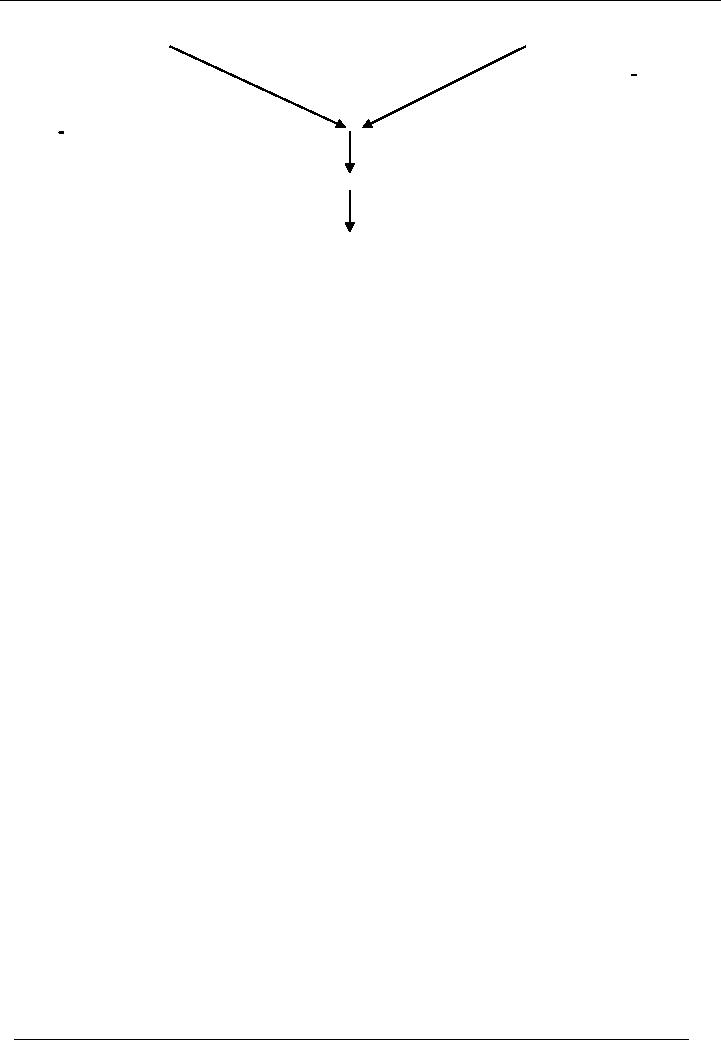
Financial
Accounting (Mgt-101)
VU
Raw
Material Stock
Other
Costs Accounts
Work
in Process Account
Finished
Goods Account
Cost
of Goods Sold
Account
In manufacturing
concern, Raw material stock
is put into process. For
accounting purposes, all
value of
stock
and other manufacturing costs
are charged to work in
process account. When the
process is completed
and
the goods are prepared, all
the value of work in process is
charged to finished goods
account. The
business
sells finished goods for the
whole accounting year. At the
end of the year, goods that
are unsold are
deducted
from cost of goods sold
account.
Journal
Entries (Manufacturing
Concern)
Purchase
of raw material
Debit:
Stock/Material
Account
Credit:
Cash/Bank/Creditors
Other
direct costs incurred
Debit:
Relevant
cost/Expense Head
Credit:
Cash/Bank/Payables
Raw
material issued and other
costs allocated to production of
units
Debit:
Work
in process
Credit:
Stock
Material Account
Debit:
Work
in process
Credit:
Relevant
Expense Head Account
When
production is completed
Debit:
Finished
Goods Stock Account
Credit:
Work
in process account
Entry
for Cost of sale
Debit:
Cost
of Goods Sold Account
Credit:
Finished
Goods Stock Account
Entry
for sale of goods
Debit:
Cash/Account
receivable Account
109
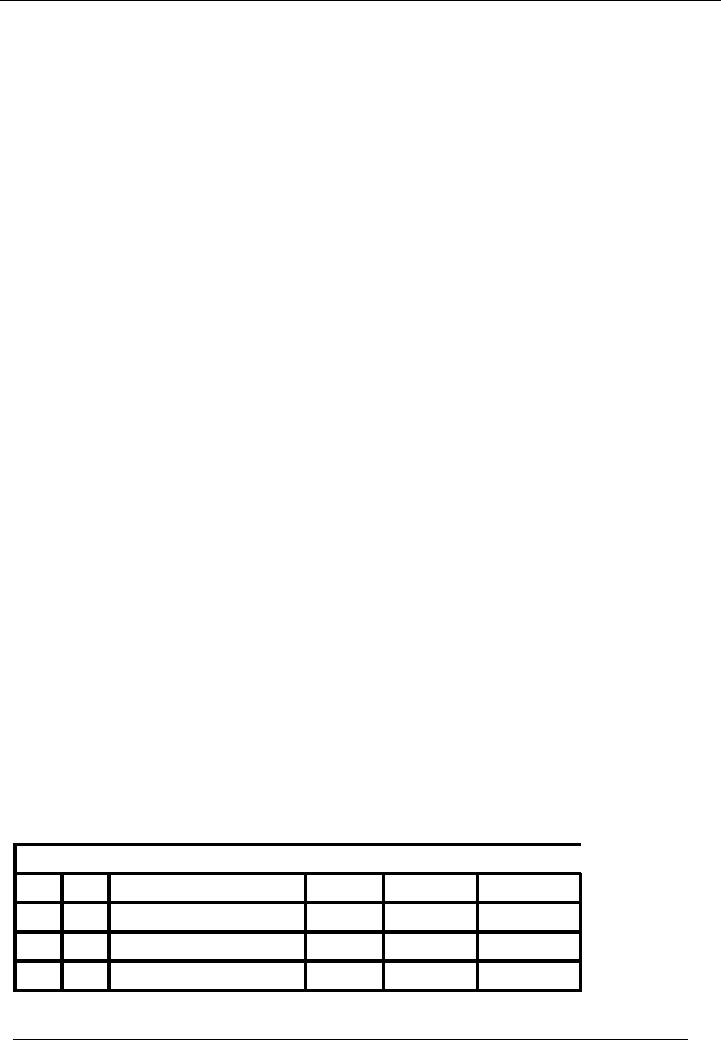
Financial
Accounting (Mgt-101)
VU
Credit:
Sales
Account
Return of
purchased material
There
are two options for
recording purchase material
return
� Option
1
Debit:
Goods
Return Account
Credit:
Stock
Material Account
AND
Debit:
Cash/Bank
Account
Credit:
Goods
Return Account
OR
If our
supplier supplies us some other
material in exchange of material
returned. Then:
Debit
Raw
Material Stock
Account
Credit:
Goods
Return Account
In the
first case above, cash is
received in return of goods. In the
second case, defective goods
are
exchanged
with quality goods. That is
why, we debited our stock account.
Both entries are correct
for
return
of purchased items.
Option
2
Debit:
Cash/Creditor
Account
Credit:
Stock
Account
Example
1
� Record
the following transactions:
1.
Purchased goods for cash
Rs. 10,000
2.
Purchased goods on credit from
ABC Co. Rs.
25,000
3.
Sold goods whose cost
was Rs. 20,000
4.
Returned goods to ABC Co.
that originally cost Rs.
5,000
5.
Paid to ABC Co. Rs.
15,000 through cheque
6.
Sold goods whose cost
was Rs. 5,000
�
Answer
following questions.
1.
What is the cost of goods
sold?
2.
What is the value of closing
stock?
3.
What amount is payable to ABC
Co.?
1
Purchased goods for cash
Rs. 10,000
Cash
Account
Code
--
Date
No.
Narration
Dr.
Rs.
Cr.
Rs.
Bal.
Dr/(Cr)
1
Purchased
goods for cash
10,000
(10,000)
110
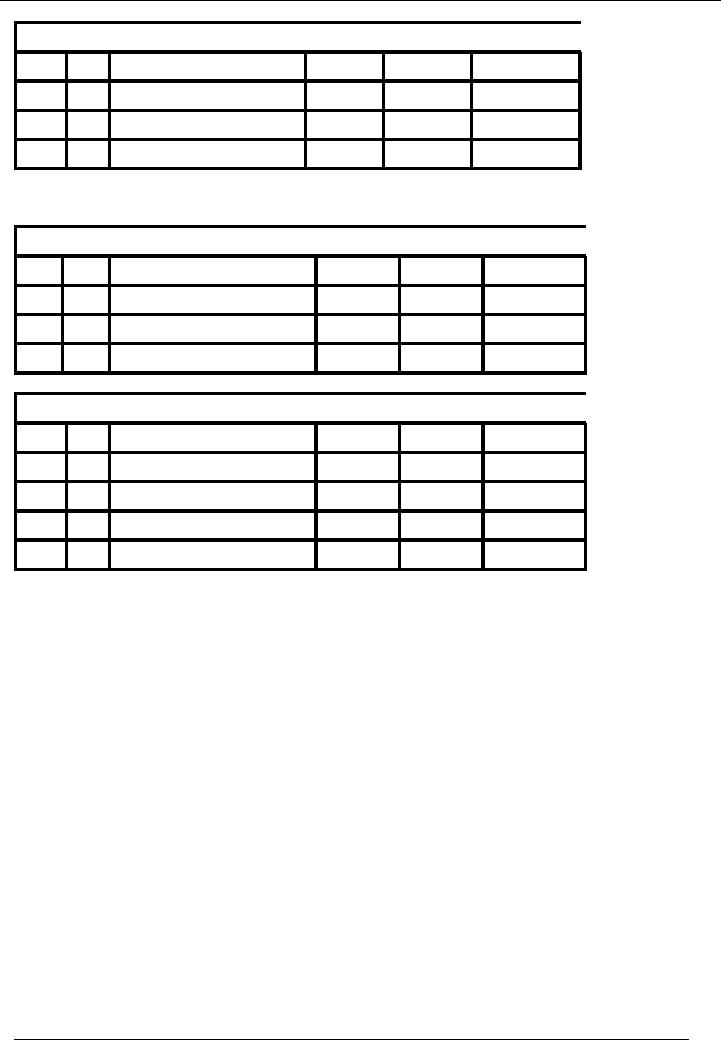
Financial
Accounting (Mgt-101)
VU
Stock
Account Code --
Date
No.
Narration
Dr.
Rs.
Cr.
Rs.
Bal.
Dr/(Cr)
1
Purchased
goods for cash
10,000
10,000
2
Purchased goods on credit from
ABC Co. Rs.
25,000
ABC
Co.
Code
--
Date
No.
Narration
Dr.
Rs.
Cr.
Rs.
Bal.
Dr/(Cr)
2
Purchased
goods from ABC
25,000
(25,000)
Stock
Account Code --
Date
No.
Narration
Dr.
Rs.
Cr.
Rs.
Bal.
Dr/(Cr)
1
Purchased
goods for cash
10,000
10,000
2
Purchased
goods from ABC
25,000
35,000
111
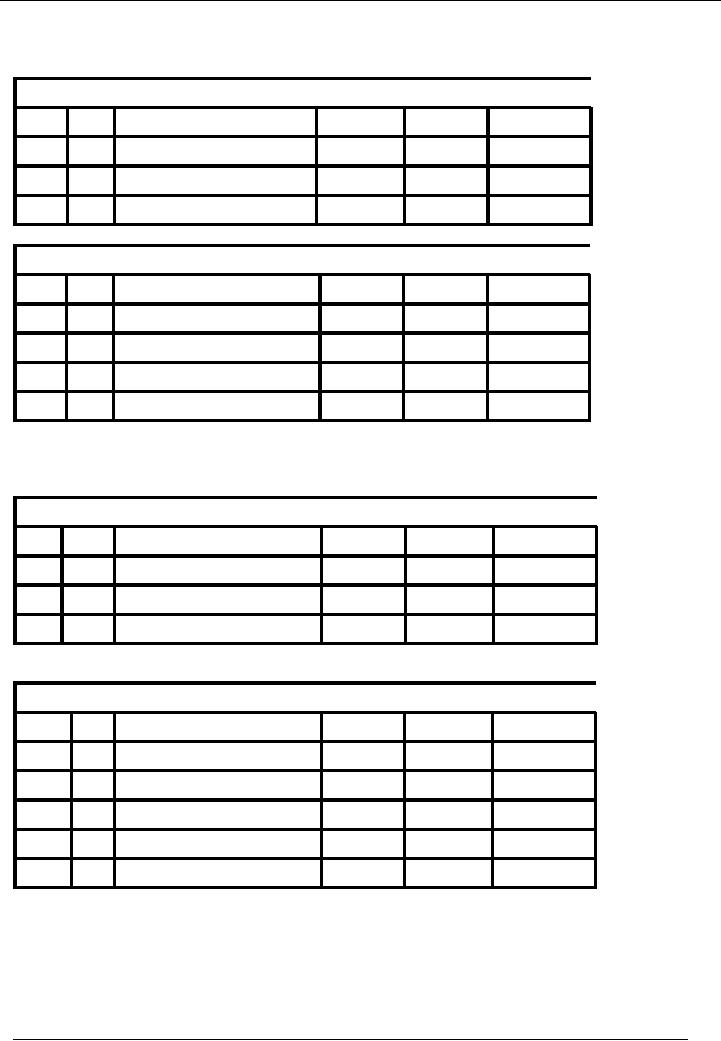
Financial
Accounting (Mgt-101)
VU
3
Sold goods whose cost
was Rs. 20,000
Cost
of Goods Sold
Code
--
Date
No.
Narration
Dr.
Rs.
Cr.
Rs.
Bal.
Dr/(Cr)
3
Goods
sold
20,000
20,000
Stock
Account Code --
Date
No.
Narration
Dr.
Rs.
Cr.
Rs.
Bal.
Dr/(Cr)
1
Purchased
goods for cash
10,000
10,000
2
Purchased
goods from ABC
25,000
35,000
3
Goods
sold
20,000
15,000
4
Returned goods to ABC Co.
cost Rs. 5,000
ABC
Co.
Code
--
Date
No.
Narration
Dr.
Rs.
Cr.
Rs.
Bal.
Dr/(Cr)
2
Purchased
goods from ABC
25,000
(25,000)
4
Returned
goods to ABC
5,000
(20,000)
Stock
Account Code --
Date
No.
Narration
Dr.
Rs.
Cr.
Rs.
Bal.
Dr/(Cr)
1
Purchased
goods for cash
10,000
10,000
2
Purchased
goods from ABC
25,000
35,000
3
Goods
sold
20,000
15,000
4
Returned
goods to ABC
5,000
10,000
112
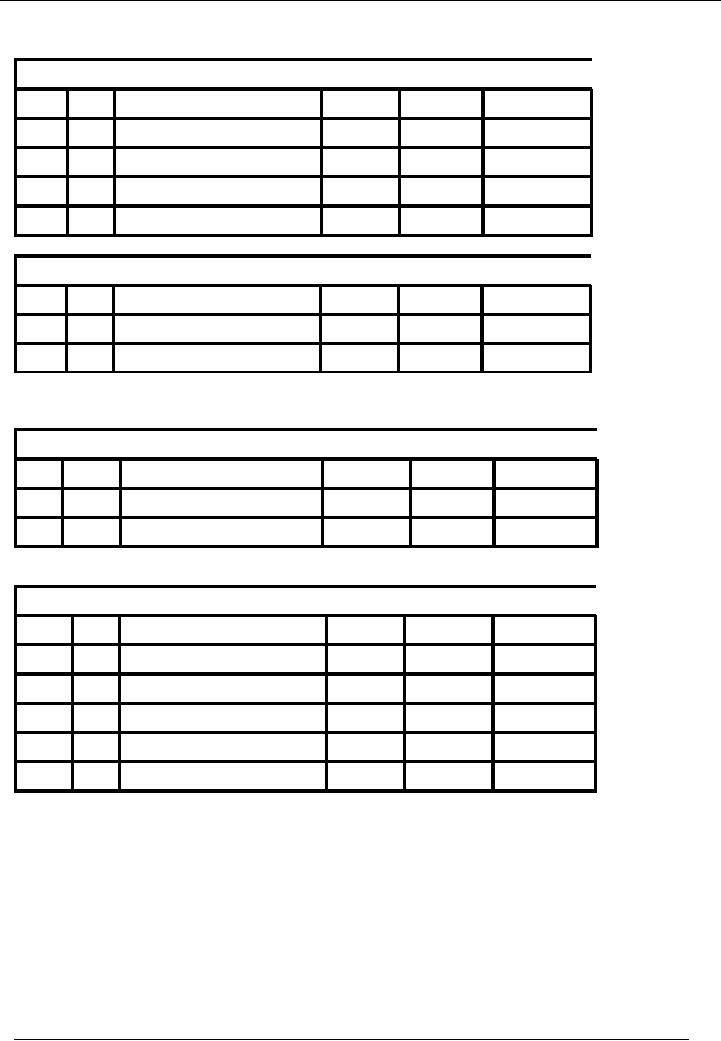
Financial
Accounting (Mgt-101)
VU
5
Paid to ABC Co. Rs.
15,000 through cheque
ABC
Co.
Code
--
Date
No.
Narration
Dr.
Rs.
Cr.
Rs.
Bal.
Dr/(Cr)
2
Purchased
goods from ABC
25,000
(25,000)
4
Returned
goods to ABC
5,000
(20,000)
5
Paid
to ABC
15,000
(5,000)
Bank
Account Code --
Date
No.
Narration
Dr.
Rs.
Cr.
Rs.
Bal.
Dr/(Cr)
5
Paid
to ABC
15,000
6
Sold goods whose cost
was Rs. 5,000
Cost
of Goods Sold
Code
--
Date
No.
Narration
Dr.
Rs.
Cr.
Rs.
Bal.
Dr/(Cr)
3
Goods
sold
20,000
20,000
6
Goods
sold
5,000
25,000
Stock
Account Code --
Date
No.
Narration
Dr.
Rs.
Cr.
Rs.
Bal.
Dr/(Cr)
1
Purchased
goods for cash
10,000
10,000
2
Purchased
goods from ABC
25,000
35,000
3
Goods
sold
20,000
15,000
4
Returned
goods to ABC
5,000
10,000
6
Goods
sold
5,000
5,000
113
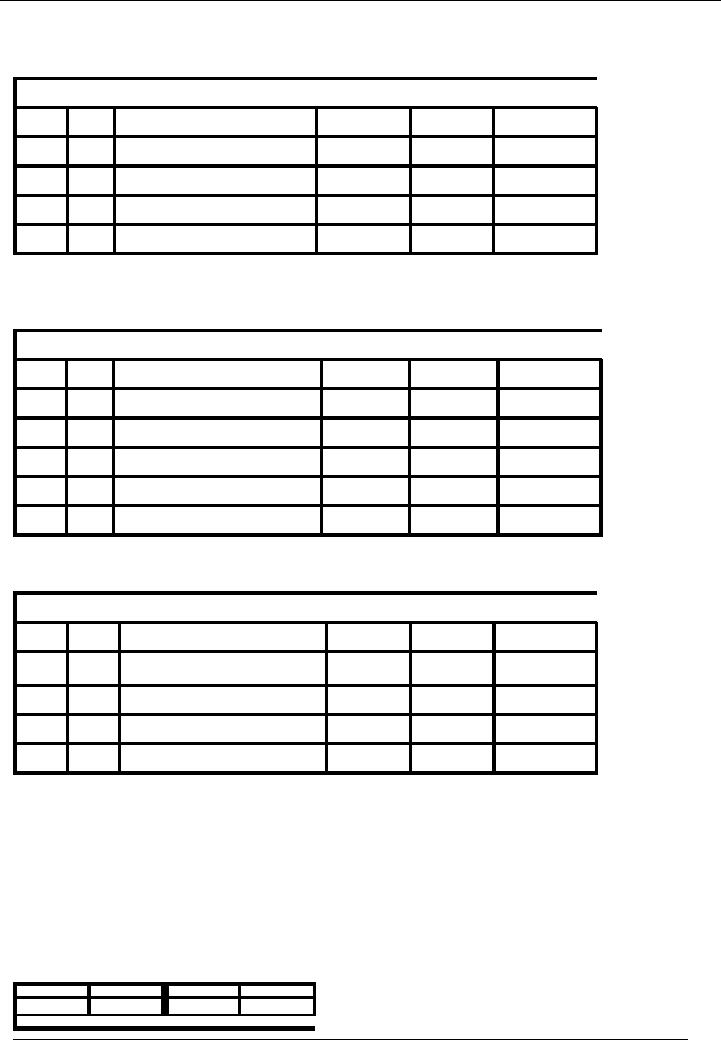
Financial
Accounting (Mgt-101)
VU
Q1
What is the cost of goods
sold?
Cost
of Goods Sold
Code
--
Date
No.
Narration
Dr.
Rs.
Cr.
Rs.
Bal.
Dr/(Cr)
3
Goods
sold
20,000
20,000
6
Goods
sold
5,000
25,000
Q2
What is the value of closing
stock?
Stock
Account Code --
Date
No.
Narration
Dr.
Rs.
Cr.
Rs.
Bal.
Dr/(Cr)
1
Purchased
goods for cash
10,000
10,000
2
Purchased
goods from ABC
25,000
35,000
3
Goods
sold
20,000
15,000
4
Returned
goods to ABC
5,000
10,000
6
Goods
sold
5,000
5,000
Q3
What amount is payable to ABC
Co.?
ABC
Co.
Code
--
Date
No.
Narration
Dr.
Rs.
Cr.
Rs.
Bal.
Dr/(Cr)
2
Purchased
goods from ABC
25,000
(25,000)
4
Returned
goods to ABC
5,000
(20,000)
5
Paid
to ABC
15,000
(5,000)
Example
2
�
Using the
following data calculate the
Cost of Goods Sold of XYZ
Co.
Stock
levels
Opening
Rs.
Closing
Rs.
Raw
material
100,000
85,000
Work
in process
90,000
95,000
Finished
goods
150,000
140,000
Purchase
of raw material during the
period Rs. 200,000
Paid
to labour Rs. 180,000 out of
which Rs. 150,000 used on
production.
Other
production costs Rs.
50,000
O/S
100,000
Raw
Material Account
114
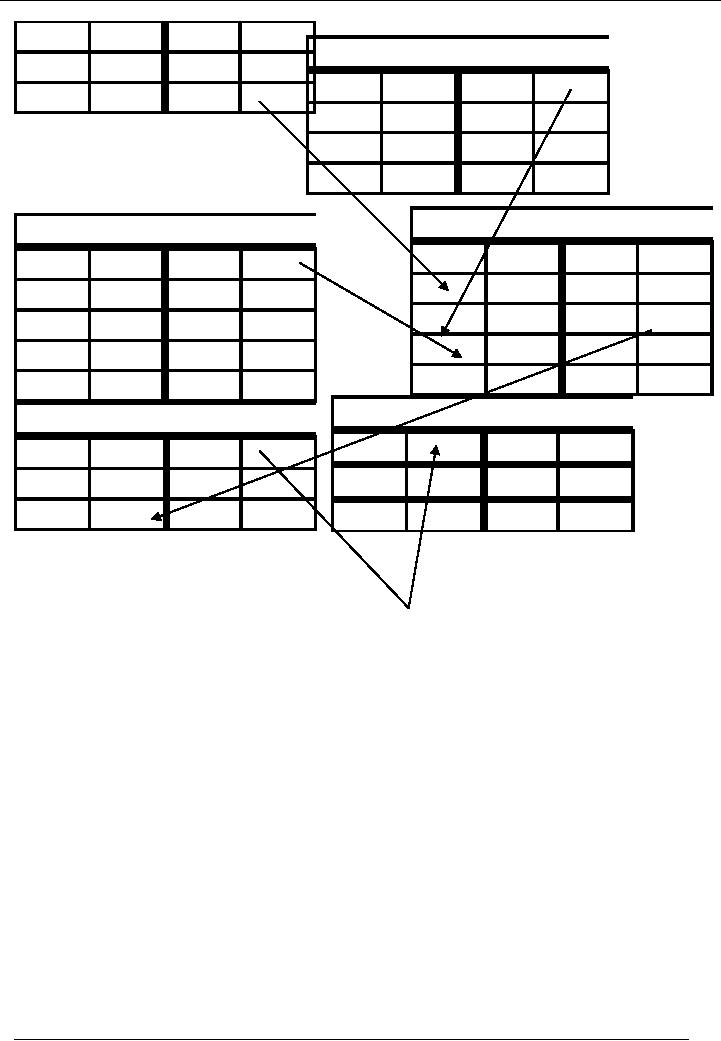
Financial
Accounting (Mgt-101)
VU
Purch.
200,000
WIP
215,000
Labour
Account
C/S
85,000
Cost
180,000
Charge
150,000
Total
300,000
Total
300,000
Total
180,000
Total
180,000
Work
in Process Account
Other
Costs Account
O/B
90,000
Paid
50,000
Charge
50,000
Raw
M
215,000
Labour
150,000
F/G
410,000
O/H
50,000
C/B
95,000
Total
505,000
Total
505,000
Total
50,000
Total
50,000
Cost
of goods sold
Finished
Goods Stock Account
F/G
420000
O/S
150,000
COS
420,000
WIP
410,000
C/S
140,000
Total
560,000
Total
460,000
ILLUSTRATION
# 1
Record
the following transactions
� Purchased
goods for cash Rs,
10,000
� Purchased
goods from Ali Brothers.
worth of Rs. 20,000
� Sold
goods having cost of
Rs.15,000
� Returned
goods to Ali Brothers. worth of
Rs. 4,000
� Sold
goods having cost of Rs.
5,000
� Paid
to Ali Brothers. Rs.
10,000.
Also
ascertain
� Cost
of goods sold.
� Value
of closing stock.
� Payable
to Ali Brothers.
115
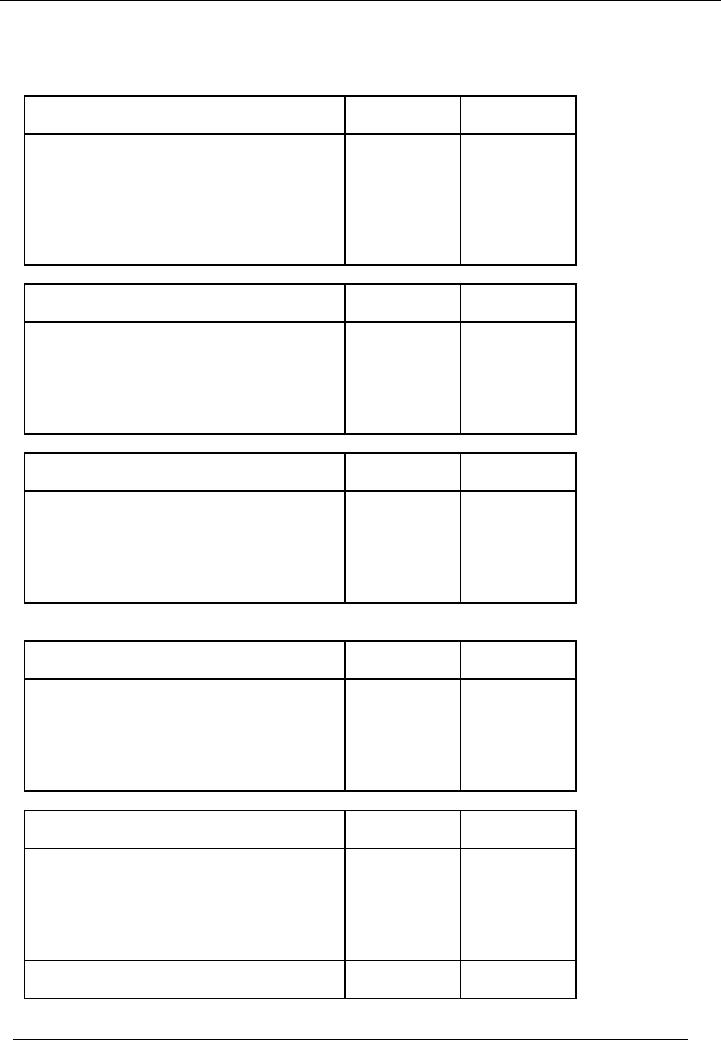
Financial
Accounting (Mgt-101)
VU
SOLUTION
First, we
will pass journal
entries
Particulars
Amount(Dr.)
Amount(Cr.)
Rs.
Rs.
Stock
Account
10,000
Cash
Account
10,000
Goods
purchased for cash
Particulars
Amount(Dr.)
Amount(Cr.)
Rs.
Rs.
Stock
Account
20,000
Ali
Brothers.
20,000
Goods
purchased from Ali
Brothers.
Particulars
Amount(Dr.)
Amount(Cr.)
Rs.
Rs.
Cost
of goods sold
15,000
Stock
Account
15,000
Goods
sold whose cost was
Rs. 15,000
Particulars
Amount(Dr.)
Amount(Cr.)
Rs.
Rs.
Ali
Brothers.
4,000
Stock
Account
4,000
Goods
returned to Ali Brothers.
Particulars
Amount(Dr.)
Amount(Cr.)
Rs.
Rs.
Cost
of goods sold
5,000
Stock
Account
5,000
Goods
sold whose cost was
Rs. 5,000
Particulars
Amount(Dr.)
Amount(Cr.)
Rs.
Rs.
116
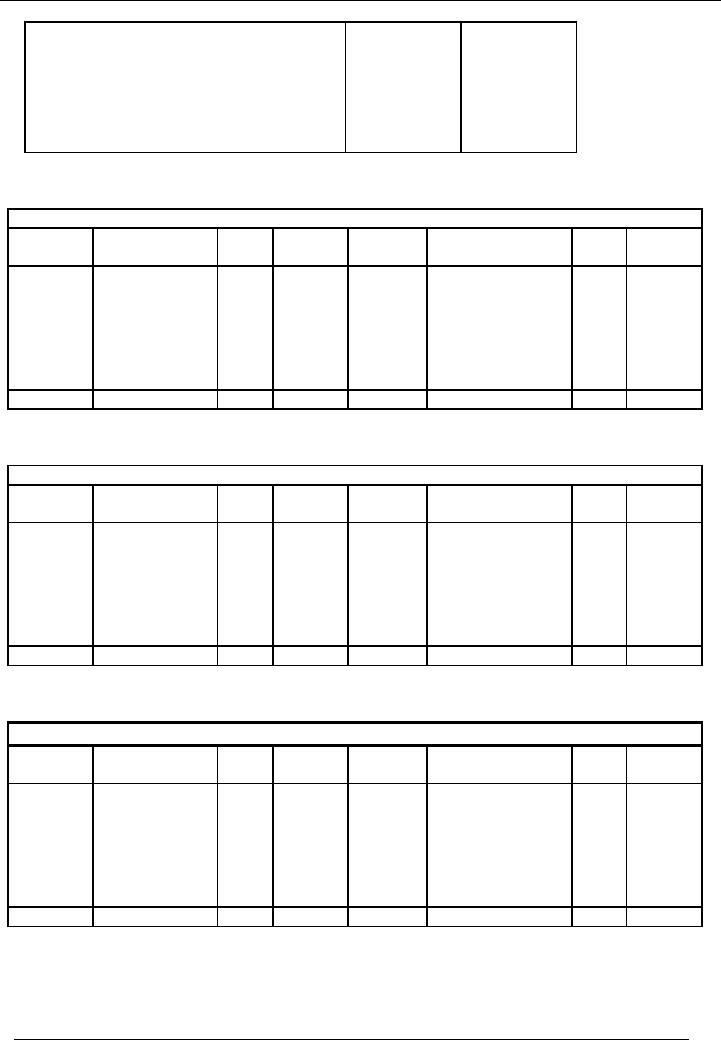
Financial
Accounting (Mgt-101)
VU
Ali
Brothers. Account
10,000
Cash
Account
10,000
Paid
to Ali Brothers.
PAYABLE
TO ALI BROTHERS
Ali
Brothers Account
Date
Particulars
Code
Amount
Date
Particulars
Code
Amount
#
Rs.
(Dr.)
#
Rs.
(Cr.)
Goods
returned
4,000
Purchased
goods
20,000
Paid
cash
10,000
BALANCE
6,000
Total
20,000
Total
20,000
COST
OF GOODS SOLD
Cost
of goods sold
Account
Date
Particulars
Code
Amount Date
Particulars
Code
Amount
#
Rs.
(Dr.)
#
Rs.
(Cr.)
Goods
sold
15,000
Goods
sold
5,000
BALANCE
20,000
Total
20,000
Total
20,000
VALUE OF
CLOSING STOCK
Stock
Account
Date
Particulars
Code
Amount
Date
Particulars
Code
Amount
#
Rs.
(Dr.)
#
Rs.
(Cr.)
Purchased
10,000
Goods
sold
15,000
goods
for cash
Returned
to
Ali
4,000
Purchased
20,000
Brothers
goods
from Ali
Goods
sold
5,000
Brothers.
BALANCE
6,000
Total
30,000
Total
30,000
ILLUSTRATION
# 2
�
Using the
following data calculate the
Cost of Goods Sold of XYZ
Co.
Stock
levels
Opening
Rs.
Closing
Rs.
Raw
material
100,000
85,000
117
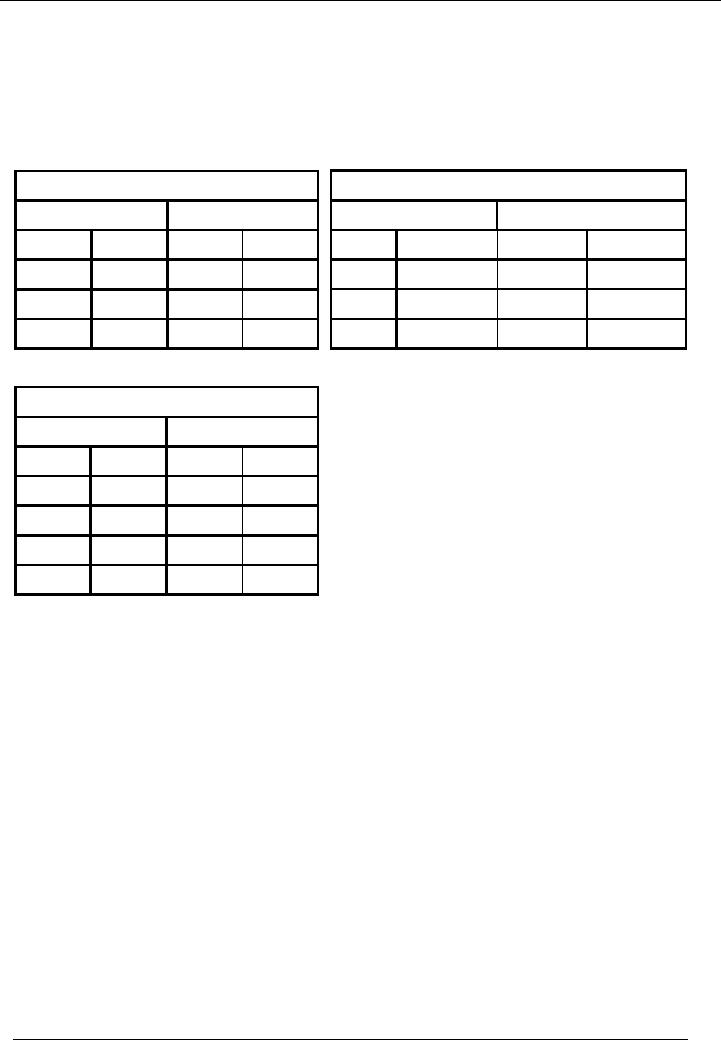
Financial
Accounting (Mgt-101)
VU
Work
in process
90,000
95,000
Finished
goods
150,000
140,000
o Purchase
of raw material during the
period Rs. 200,000
o Paid
to labour Rs. 180,000 out of
which Rs. 150,000 used on
production.
o Other
production costs Rs.
50,000
SOLUTION
Labour
Account
Raw
Material Stock
Account
Debit
Credit
Debit
Credit
O/S
100,000
Cost
180,000Charged
150,000
Purchases
200,000
WIP
215,000
C/S
85,000
300,000
Total
180,000Total
180,000
Total
300,000
Total
Other
Costs Account
Debit
Credit
Paid
50,000
Charge
50,000
Total
50,000
Total
50,000
118
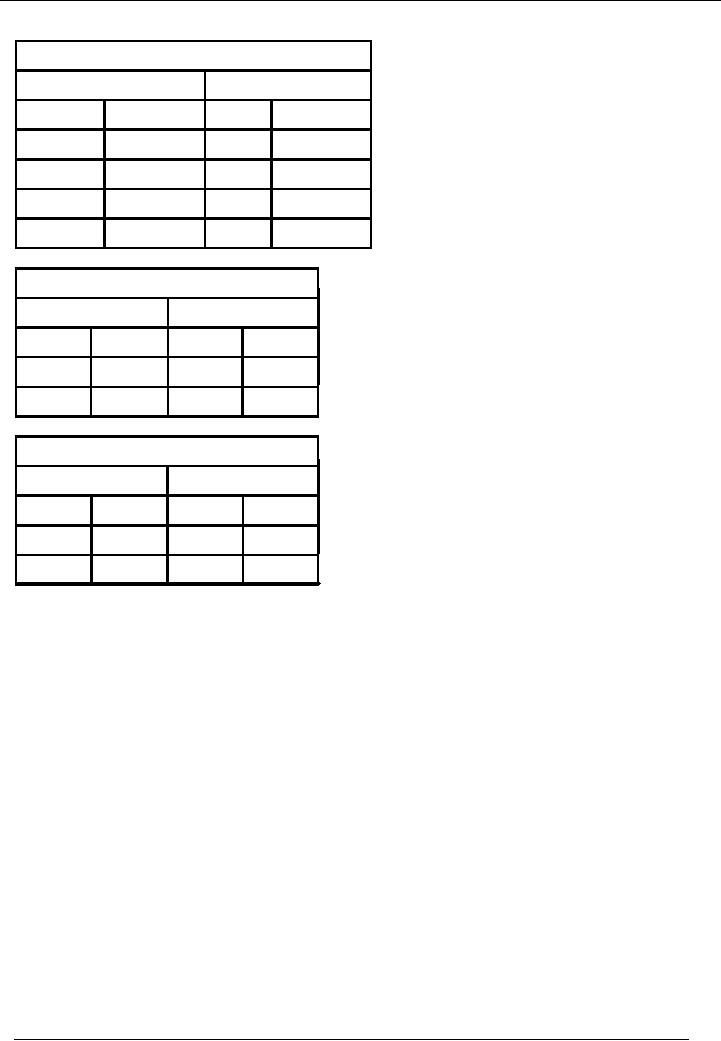
Financial
Accounting (Mgt-101)
VU
Work
in Process Account
Debit
Credit
O/B
90,000
Raw
M
215,000
Labor
150,000
F/G
410,000
O/H
50,000
C/B
95,000
Total
505,000
Total
505,000
Finished
Goods Stock
Account
Debit
Credit
O/S
150,000
COS
420,000
WIP
410,000
C/S
140,000
Total
560,000
Total
560,000
Cost
of Goods Sold
Account
Debit
Credit
F/G
420,000
�
In the
Raw Material Account, the
debit side contains:
o Opening
balance
100,000
o Purchases
200,000
�
On the credit
side, closing balance of Rs.
85,000 is shown along with the
balancing figure of Rs.
215,000
which
is charged to work in process OR
WIP account through the
following entry:
Debit:
Work
in process OR WIP
Account
Credit:
Raw
Material Account
�
Labour
cost of Rs. 180,000 is given,
out of which Rs. 150,000 is
charged to production. (Remaining
cost
of Rs.
30,000 will be explained in some later
stage). That means Rs.
150,000 are charged to work
in
process
OR WIP account through the
following entry:
Debit:
Work
in process OR WIP
Account
Credit:
Labour
Cost Account
119

Financial
Accounting (Mgt-101)
VU
�
Other
costs of Rs. 50,000 is also
charged to work in process OR
WIP account through the
following
entry:
Debit:
Work
in process OR WIP
Account
Credit:
Other
Costs Account
�
Work
in process account has the
opening balance of Rs.
90,000 and closing balance
of Rs. 95,000. After
charging
all the above mentioned accounts to
WIP. Balancing figure of
work in process of Rs.
410,000 is
charged
to finished goods account
through the following entry:
Debit:
Finished
Goods Account
Credit:
Work
in process Account
�
Finished
goods account has the
opening balance of Rs.
150,000 and closing balance
of Rs. 140,000.
After
charging WIP account to Finished
goods, the balancing figure of
Rs. 420,000, is charged to
cost of
goods
sold account through the
following entry:
Debit:
Cost
of Goods Sold Account
Credit:
Finished
Goods Account
120
Table of Contents:
- Introduction to Financial Accounting
- Basic Concepts of Business: capital, profit, budget
- Cash Accounting and Accrual Accounting
- Business entity, Single and double entry book-keeping, Debit and Credit
- Rules of Debit and Credit for Assets, Liabilities, Income and Expenses
- flow of transactions, books of accounts, General Ledger balance
- Cash book and bank book, Accounting Period, Trial Balance and its limitations
- Profit & Loss account from trial balance, Receipt & Payment, Income & Expenditure and Profit & Loss account
- Assets and Liabilities, Balance Sheet from trial balance
- Sample Transactions of a Company
- Sample Accounts of a Company
- THE ACCOUNTING EQUATION
- types of vouchers, Carrying forward the balance of an account
- ILLUSTRATIONS: Ccarrying Forward of Balances
- Opening Stock, Closing Stock
- COST OF GOODS SOLD STATEMENT
- DEPRECIATION
- GROUPINGS OF FIXED ASSETS
- CAPITAL WORK IN PROGRESS 1
- CAPITAL WORK IN PROGRESS 2
- REVALUATION OF FIXED ASSETS
- Banking transactions, Bank reconciliation statements
- RECAP
- Accounting Examples with Solutions
- RECORDING OF PROVISION FOR BAD DEBTS
- SUBSIDIARY BOOKS
- A PERSON IS BOTH DEBTOR AND CREDITOR
- RECTIFICATION OF ERROR
- STANDARD FORMAT OF PROFIT & LOSS ACCOUNT
- STANDARD FORMAT OF BALANCE SHEET
- DIFFERENT BUSINESS ENTITIES: Commercial, Non-commercial organizations
- SOLE PROPRIETORSHIP
- Financial Statements Of Manufacturing Concern
- Financial Statements of Partnership firms
- INTEREST ON CAPITAL AND DRAWINGS
- DISADVANTAGES OF A PARTNERSHIP FIRM
- SHARE CAPITAL
- STATEMENT OF CHANGES IN EQUITY
- Financial Statements of Limited Companies
- Financial Statements of Limited Companies
- CASH FLOW STATEMENT 1
- CASH FLOW STATEMENT 2
- FINANCIAL STATEMENTS OF LISTED, QUOTED COMPANIES
- FINANCIAL STATEMENTS OF LISTED COMPANIES
- FINANCIAL STATEMENTS OF LISTED COMPANIES